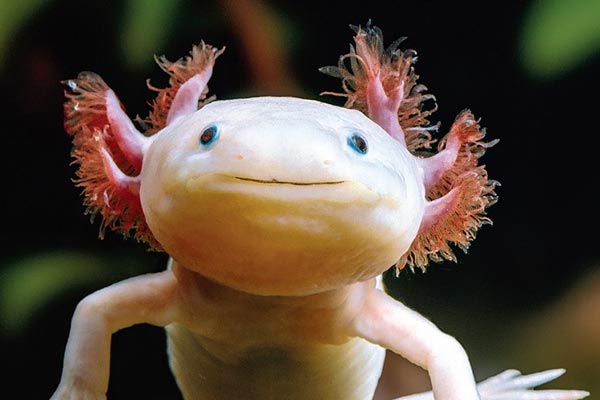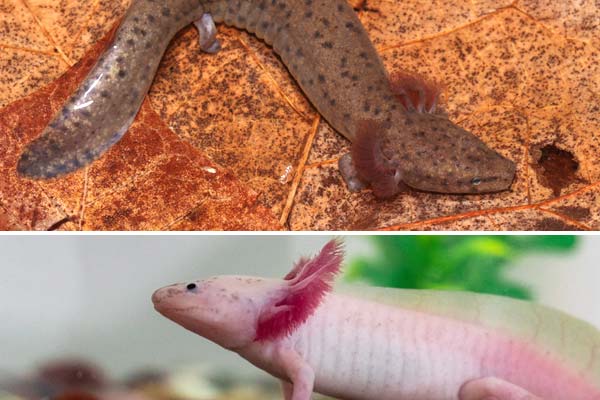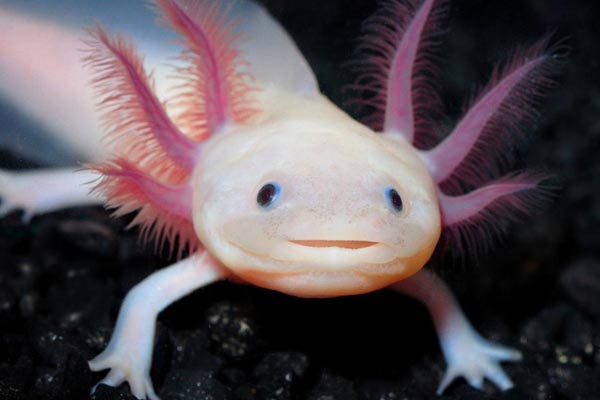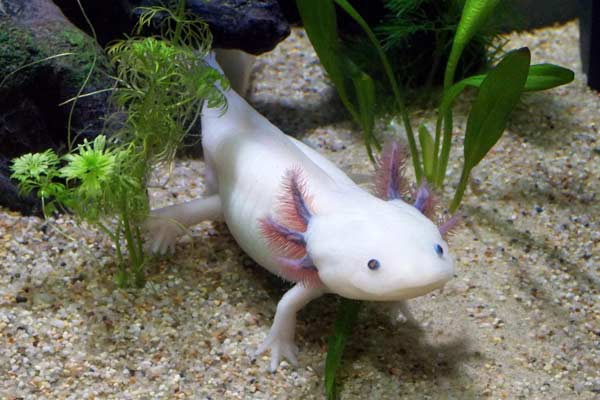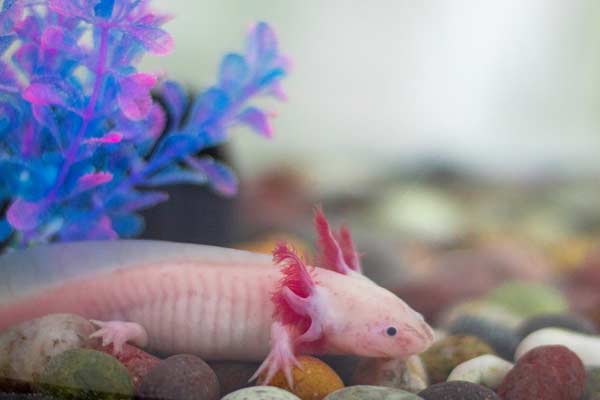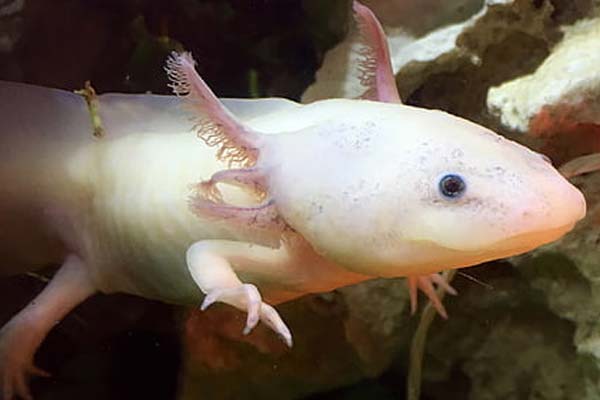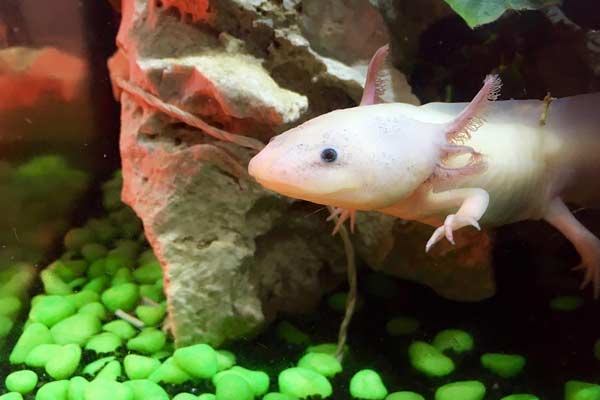Can Axolotls Eat Shrimp: A Guide to Adding Shrimp to Your Axolotls Diet
One of the biggest challenges you will face as an axolotl keeper is to make sure your new pet gets the right food and the right amount of food.
As My Aquarium Club points out, what axolotls eat will change as they get older and bigger. The same is true of how much your axolotl will need to eat as they grow up.
Axolotls are pure meat eaters – carnivores. Right from hatching an axolotl will need to eat a pure animal protein diet to stay healthy and grow to their full adult size.
Luckily, newborn axolotls do have a small amount of their own yolk sack still attached to their abdomens. This stash gets them through the first 48 hours and then they need to start feeding right away.
Like most newborns, baby axolotls will eat a lot and grow quickly. Shrimp can make up an important part of a baby axolotl’s diet and all throughout life. In this article, we will discuss how to safely add shrimp to your axolotl’s diet at any age and life stage.
Can Axolotls Eat Shrimp? What You Need to Know
Axolotls love shrimp. All throughout their life, an axolotl will remain fond of shrimp and eager to eat them.
In a wild situation, shrimp will be a staple food for axolotls along with worms, fish, insects, and even other salamanders, as the University of Kentucky research department points out.
All kinds of shrimp are found to feed axolotls as long as you are sure the shrimp is safely sourced from parasite-free water.
Here are the four most commonly shrimp species that keepers offer axolotls for food:
BBS (baby brine shrimp)
Adult brine shrimp
Ghost shrimp
Shrimp (usually cut into bits for safety)
Baby brine shrimp are suitable to feed to new baby axolotls and very young juveniles. Adult brine shrimp are suitable as a staple food source for older juvenile and adult axolotls.
Ghost shrimp and human-grade shrimp (diced) are suitable only as occasional treats for reasons of both cost and potential for contamination.
3 Key Safety Concerns When Feeding Shrimp to Baby Axolotl
But baby axolotls are so small themselves that most shrimp will be far too large for them to grasp and swallow safely.
As Axolotl.org points out, the largest a newly hatched baby axolotl typically averages around a one-half inch.
There is another challenge when it comes to feeding newborn axolotls, which is that they need to see a motion to be triggered to snap at prey. So you need to feed very tiny live food to your very tiny newborn axolotl.
So what is the best food for baby axolotls? Newly hatched brine shrimp! But there are some significant safety considerations to keep in mind anytime you are feeding newborn baby axolotls.
1. You must feed only live food
As Caudata explains, baby axolotls need live micro-foods, and newly hatched brine shrimp fit the bill perfectly.
Only live foods will make the movements that trigger your baby axolotl’s snapping reflex.
Be aware here that you need the brine shrimp called “Artemia” or “BBS” (short for “baby brine shrimp”). Other brine shrimp will be too big.
In most cases, you will need to hatch out the baby brine shrimp yourself. Check with your local pet store or online to buy dry eggs called “cysts.”
You can just follow the instructions that come with the cysts to hatch the baby brine shrimp (Caudata has a handy how-to tutorial you may want to reference) but be sure to start this process before your axolotls are ready to feed since it can take a few days.
2. You must remove all unhatched eggs and eggshells
It is imperative that you make sure the baby brine shrimp you feed your baby axolotl does not contain any un-hatched eggs (cysts) or eggshells.
These can cause your axolotl to choke and die.
3. You must do frequent water changes when feeding brine shrimp
Newly hatched brine shrimp have a very short lifespan. Anything that your baby axolotl doesn’t snatch up and eat right away will die.
Once the baby brine shrimp die, they will cause water fouling and put your axolotl’s health in danger. So you will have to change the water at least in part daily while feeding this type of diet.
In this video, you can see baby axolotls feeding on baby brine shrimp.
3 Key Safety Risks When Feeding Shrimp to Older Juvenile and Adult Axolotl
Luckily, baby axolotls don’t stay baby-sized for very long. Within six months, most axolotls have grown to at least nine inches long.
But the interim period can present certain safety challenges you will need to be aware of when feeding your axolotl shrimp or any protein prey.
1. Mouth size should determine meal size
The size of an axolotl’s mouth and the size of the meal must be evenly matched. Otherwise, your axolotl is at risk of choking or suffocating while trying to eat.
Axolotls may regurgitate a meal several times while ingesting it. This is to help them soften and break up the meal with their rudimentary tooth stubs. So if you see your axolotl doing this with a shrimp meal there is nothing to worry about.
However, you should always watch your axolotl feeding and prepare to intervene if you see any signs that your pet is choking or gets anything caught in their gills.
2. Older axolotls may try to eat tank mates
As axolotls grow up, their mouths get bigger and so do their stomachs. They also get stronger and more confident and better at hunting prey.
This is when it is time to be very careful about the other creatures you put into your axolotl’s tank. They may go after small live fish, live shrimp, and also other axolotls and salamander species.
This can cause concerns about parasites, injury, and choking.
3. Overfeeding is a known hazard
Axolotls may continue to feed if the prey is plentiful, even if they are no longer hungry. This can result in your axolotl gorging on “treat” food that is not nutritionally balanced.
Poor nutrition can limit your axolotl’s life expectancy. Be sure to carefully portion out treats like ghost shrimp and human-grade shrimp to avoid overfeeding.
4. Feeding any type of live prey may introduce parasites and water fouling
Parasites and fouled water remain a concern anytime you feed shrimp to axolotls.
How to Feed Shrimp to Older Juvenile and Adult Axolotl
Feeding shrimp to older juvenile and adult axolotl pets is easier than trying to feed baby axolotls.
Older juvenile and adult axolotls should be eating mainly nutritionally balanced pellets or earthworms as a staple.
Shrimp can transition to being more of a treat food at this stage of life. You can let older, stronger axolotl hunt their own brine shrimp or ghost shrimp to offer more environmental enrichment to their daily life.
If you want to feed human-grade shrimp or prawns, you will still need to dice them up into pieces no bigger than the width of a large earthworm for safety.
Shrimp will always be a welcome addition to the axolotl’s diet in captivity. Axolotls enjoy shrimp throughout life. This can give you a handy dietary backup plan just in case you ever run into trouble getting live whole earthworms for your pet axolotl.

